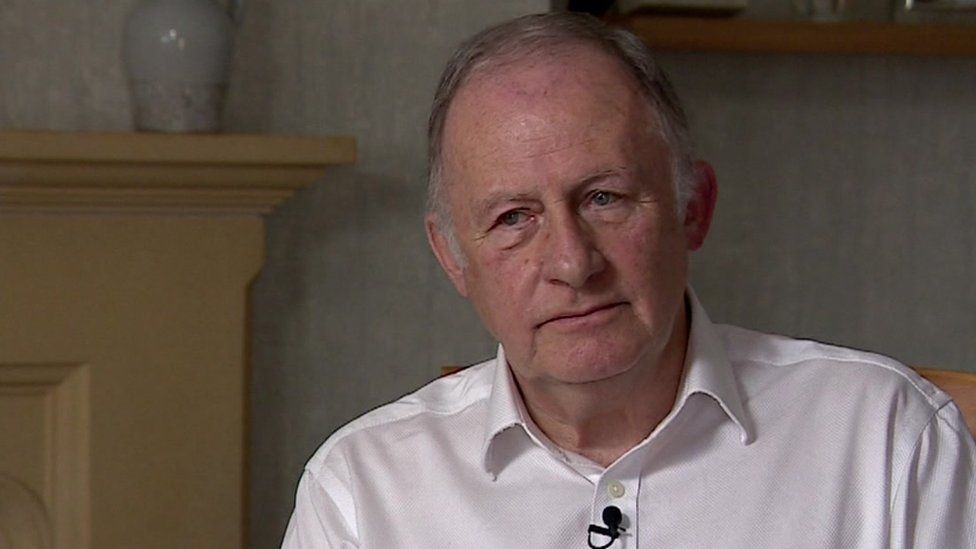
When we use the word cost, we naturally first think of sums of money, great or small. But the word cost is much more frequently used in contexts that have nothing to do with tangible wealth. It is about some kind of depletion of resources, whether it happens to an individual or organisation. ‘It cost him his reputation’, we might say. We may also refer to the costs of a dispute which involve the loss of health for an individual. Alternatively, we may be referring to the damage to the reputation of an institution. All these negative outcomes can be described as costs which have nothing to with monetary wealth.
In the last blog post written by ‘Jonathan’ I wanted to provide, as part of the blog, something of my own commentary about the NDA placed in front of him as part of the way of settling his dispute with the diocese. My thoughts were not able to be confined to a short paragraph, so I decided to write another blog on the topic of an NDA. My personal reflections here try to go further than just Jonathan’s individual case. I can see that, from my perspective, the costs of such a procedure fall on individuals and institutions beyond those immediately involved. It is these wider costs that I want to examine in this blog piece.
Returning to Jonathan’s story for a moment, we can see how the pressure on him to sign a confidentiality agreement was a pivotal moment in the story. After a great deal of soul-searching, Jonathan decided that he could not in conscience sign it. He appears, in spite of this refusal, to have received some kind of cash settlement for what he had been through at the hands of his training incumbent and other failures in the way the diocese handled the complaint. The things that were not attempted were a proper independent examination of the facts and a mediation effort between the two parties. We suspect that such procedures, needed to create a just resolution of the whole episode, were deemed far too time-consuming and embarrassing for the powers that be in the diocese. The nasty things that were revealed through the whistleblowing by Jonathan were best left in the cupboard and not disturbed. The preservation of the status-quo was considered to be a far more desirable outcome than a fearless search for justice and resolution of the problem.
So far, we have begun to identify a number of costs incurred in the unresolved story of Jonathan’s ordeal. Superficially the payment he received, whatever it was, represented one cost. It was an arbitrary monetary sum, designed in some way to mitigate the pain that Jonathan had suffered. In passing we note how very hard it is to put a monetary figure on such things as the pain of being humiliated by an employer, followed by the loss of employment, home and mental well-being. These other obvious costs were those paid by Jonathan himself. We have mentioned the loss of a vocation and livelihood. There were also the considerable cost of having his sense of self and dignity undermined. The NDA process, as we have already indicated, has little interest in justice and healing for a damaged individual. It is an institutional response to a organisational failure. By trying to bury the whole episode in the NDA/cash settlement process, the diocese was denying Jonathan the opportunity to find any sort of completion or healing. He was left with a sense of failure without any opportunity to regain his sense of self-worth and pride. By denying him the opportunity to defend his behaviour by looking at all the facts in an impartial way, the diocese forced him to pay the price of living with a sense of failure and unfinished business.
What other costs are incurred in the execution of an NDA process? If Jonathan had to endure both internal and external pain alongside the attempted imposition of the NDA, the stress on the institution imposing the NDA is likely also to be damaging. When any institution wants to avoid embarrassment and then finds itself using secretive NDA systems of justice as a way to protect its reputation, will not that process always be morally corrosive? Maintaining open justice within an institution is indeed costly but compulsory secrecy is also likely, in a completely different way, to involve cost. When an organisation insists on high levels of secrecy, it has to involve quite a number of people. These individuals will have various levels of involvement. Some will be directly involved in the questionable morality involved in the NDA process; others, less directly involved, will still be morally contaminated simply by knowing about it. Secrecy as an alternative to open systems of management is never a good substitute. If the public discovers that a hitherto trusted institution like the Church has deliberately hidden information or bypassed the cause of truth in some way, the consequences can be telling. Politicians may lie with bravado, but their parties are normally punished later at the ballot box. Church leaders may not be subject to a similar popular mandate every few years, but the mood of a watching public can be equally cynical and ready to withdraw support and respect. The existence of something like an NDA anywhere in an organisational system screams out loudly the message, we have something to hide. That fact is likely to contribute to a further corrosion of trust in the institution that used to be taken for granted.
In short, institutions are almost inevitably damaged when NDAs are used. This damage is created right across the board, both to those who impose the NDA and those who are its objects. Over the years, few details of NDA cases reach the public domain as the signature of the complainant has shut down sharing of information beyond the barest outline. From the information and rumour that does leak out where the church is concerned, it seems that the typical pattern is for the leaders to subcontract the whole process to compliant firms of lawyers who work closely with public relations advisers. It might be hoped that the morality of lawyers acting on behalf of the Church would inevitably be of a high ethical standard but this, in some notorious cases, appears not to be true. Lawyers are, on some occasions, even instructed to act against an individual with the sole purpose of demoralising and frightening them. It is clear that the secular legal system and the church’s own legal protocols can be, and are sometimes, ‘weaponised’ against individuals. Instructions are given to harass those who fight back against the will of the powerful figures within the institution. When an NDA is involved, it suggests that the institution feels it has something to lose, not the individual under attack. ‘Buying’ secrecy in this way seems almost inevitably to demean and corrupt those who actually write the threatening letters and those who commissioned them to do so. At its simplest level the NDA is a weapon of power used by the powerful to intimidate and threaten the weak.
In summary, an NDA causes damage to three parties, the individual having to agree to it, the institution insisting on it and the people who administer the process. If we can speak about an institution having a conscience, then this is a case where the organisation and those who set up the NDA should all have a sense of the thorough seediness of being involved in such an activity. If the lawyer or the church official is totally upright before this procedure was begun, we would hope to see some level of dissonance or disturbance within his/her conscience by being part of such a process. In this situation we can say that one of the costs of the NDA is that a church official or lawyer has been corrupted by having to go along with this doubtfully ethical procedure. It is hard to see that anyone anywhere near the process can remain morally unscathed. How are the principles of openness and justice ever served by this process?
The NDA agreement that exists between the diocese or the CofE as a whole and the individual should be completed through the signing of a form and the handing over of cash. The situation is now resolved -or is it? There are, common sense tells us, many other pieces of unfinished business which represent additional costs. These are likely to appear only in the future. Money, as in abuse cases, seldom provides healing to the one who sought justice but failed to find it. The legacy of health issues may linger for survivors over decades and perhaps never be resolved even after counselling. The unhealed wound, represented by the victim of an unresolved case of injustice, may suffer from PTSD. As Paul observed, if one part of the body suffers, all suffer. I see NDAs being like plasters which cover a wound but do not allow it to heal. A wound needs sun and fresh air to be fully healed. As the editor of this blog, I am increasingly aware of the breakdown of trust that exists when, for example, agreement cannot be found between a vicar and members of a parish. Not many of these cases result in NDAs, thankfully, but a failure of reconciliation when things go wrong at the local level, is a serious impediment to the work of the church. The Percy case will long be studied as a massive failure to provide open systems of justice. How did we ever allow a system of church justice to be in operation that allowed a dispute between bishop and dean to be so visible? That case and the unwillingness of the central body to find out all the underhand aspects of the four year saga has on its own done damage to the spiritual and institutional health of the entire Church of England.








